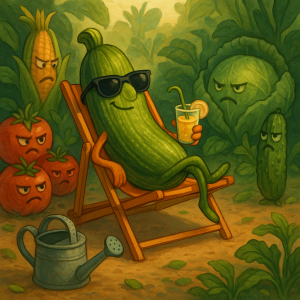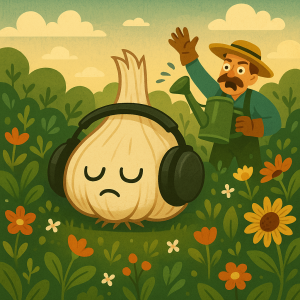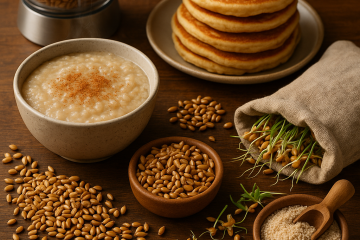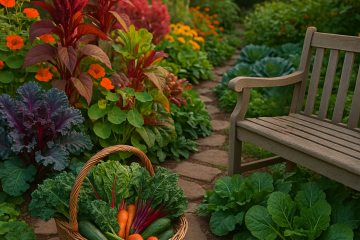
A passive zucchini
Let’s be honest, not every tomato in the garden deserves a love letter and a back massage. Sometimes, you need crops that are more “independent cat” than “needy golden retriever.” Welcome to the Passive-Aggressive Garden—a plot where survival-of-the-fittest meets “plants, you’re on your own,” and somehow, it’s still harvest time.
I started this journey after a particularly grueling summer when my squash demanded more attention than my mother-in-law during the holidays. After that, I swore an oath on a wilted basil plant: if you’re living in my yard, you’d better pull your own weight. I wanted a garden that could thrive on benign neglect, missed waterings, and the occasional pep talk yelled from the kitchen window.
The Darwinian Dream Team: Crops That Don’t Need You (Much)
1. Zucchini: The Apocalypse Survivor
If zucchini were a houseguest, it would show up unannounced, make itself at home, and then leave twelve loaves of bread on your counter before heading out for more adventures. Seriously, unless you plant it upside down in a volcano, zucchini will thrive. Forget to water it? It’s fine. Late frost? It shrugs. By midsummer, you’ll be trying to sneak it onto your neighbors’ porches under cover of darkness.
2. Swiss Chard: The Swiss Army Knife of Greens
Swiss chard is the overachiever you didn’t know you needed—heat, cold, neglect, emotional distance—it handles it all with a smile and some vibrant stems. You can cut it down to the nub, ignore it for weeks, and it still pops up like a motivational speaker at a Monday morning meeting. Bonus: It looks fancy, so people will think you know what you’re doing.
3. Jerusalem Artichokes (Sunchokes): The Hide-and-Seek Champion
Plant these once, and you’ll have them forever. Sunchokes thrive on being forgotten, popping up year after year like that one uncle who always shows up for dinner uninvited. Dig up a few tubers, leave the rest, and you’ll never starve—or be rid of them.
4. Collard Greens: The Southern Bell of the Backyard
Collards are the tough love aunties of the garden. They can take a beating, keep on growing, and will forgive you for missing a watering or three. They just need a little sunlight and the occasional “bless your heart,” and they’ll keep producing long after you’ve lost interest.
5. Garlic: The Ultimate Introvert
Garlic is the wallflower of the plant world—bury it in the fall and don’t call, don’t write, don’t even check in until spring. It likes the cold shoulder. Next thing you know, you’re pulling up plump bulbs and feeling like a gardening wizard, all for the low, low price of benign neglect. You should research the power of garlic! It’s a key ingredient in immunity strength and Chinese medicine in general.
Tips for Your Passive-Aggressive Paradise

Content garlic
Soil Prep (a.k.a. “Here’s Your One Nice Thing, Now Deal With It”)
Do your soil a solid once—add compost, fluff it up, and set your crops in like you’re sending them off to college. After that, it’s tough love time. Most of these plants will forgive you for almost anything as long as you gave them a good start.
Mulch: The Lazy Gardener’s Best Friend
Mulch is like setting up an automatic feeder for your pets. Pile it on thick to keep weeds at bay, hold in moisture, and make your garden look respectable, even if you forgot it existed for two weeks.
Watering (or, “Natural Selection at Its Finest”)
Don’t coddle your crops. Deep, infrequent soakings toughen them up, save your back, and ensure that only the strong survive. You’ll find the weaklings and the drama queens soon enough—they’ll be the ones sighing dramatically at the end of the row.
Embrace the Wild
Let a few plants go to seed. Let the mint run wild (but not too wild—you don’t want a mint-based coup d’état). Sometimes the best part of a passive-aggressive garden is discovering what comes up next year, completely on its own.
Introspection: Lessons from the Plants That Couldn’t Care Less
If there’s one thing a passive-aggressive garden teaches, it’s that self-reliance isn’t about micromanagement—it’s about giving things a solid foundation, then trusting the process (and occasionally yelling at squirrels). Sometimes the greatest harvest comes when you step back, let nature handle her business, and trust that your crops are a lot more resilient than your houseplants ever were.
So plant boldly, ignore responsibly, and when your neighbors gasp at your hands-off harvest, just shrug and say, “Oh, those old things? They basically raised themselves.”
Because in the world of the self-reliant, sometimes thriving means letting your tomatoes fend for themselves—and laughing all the way to the canning jars.
Next time you feel guilty for missing a day (or week) in the garden, just remember: resilience grows in the cracks of neglect, and sometimes, so do the best zucchinis.

